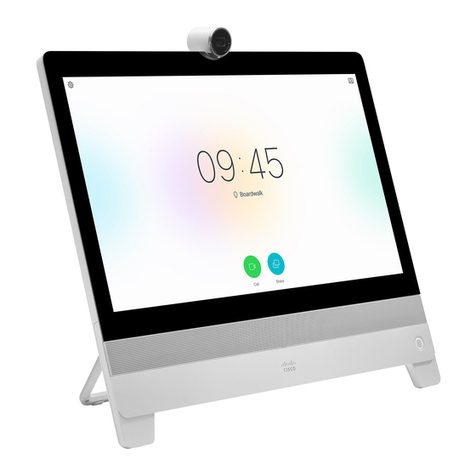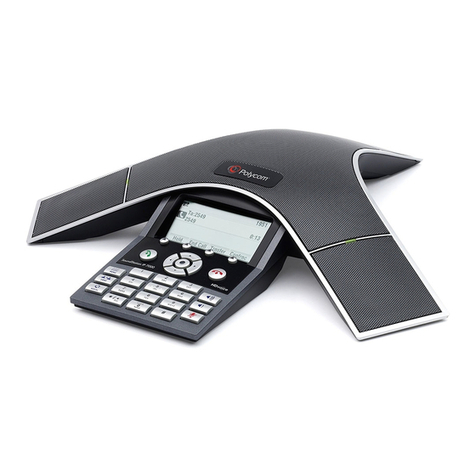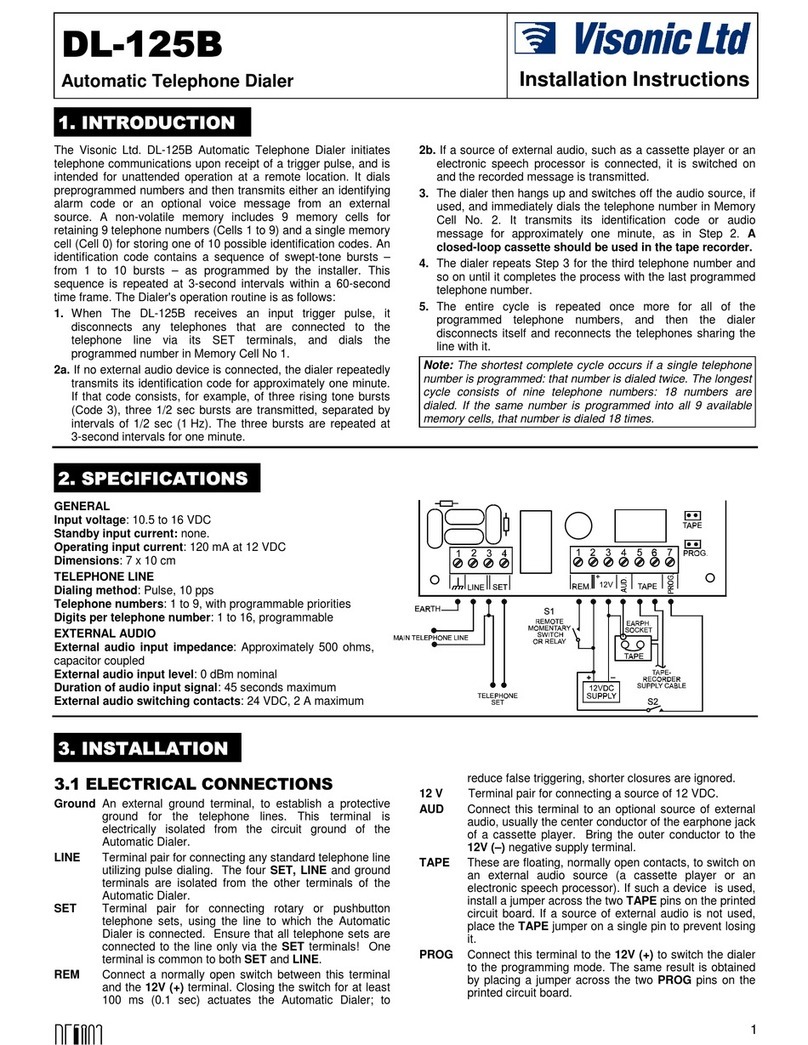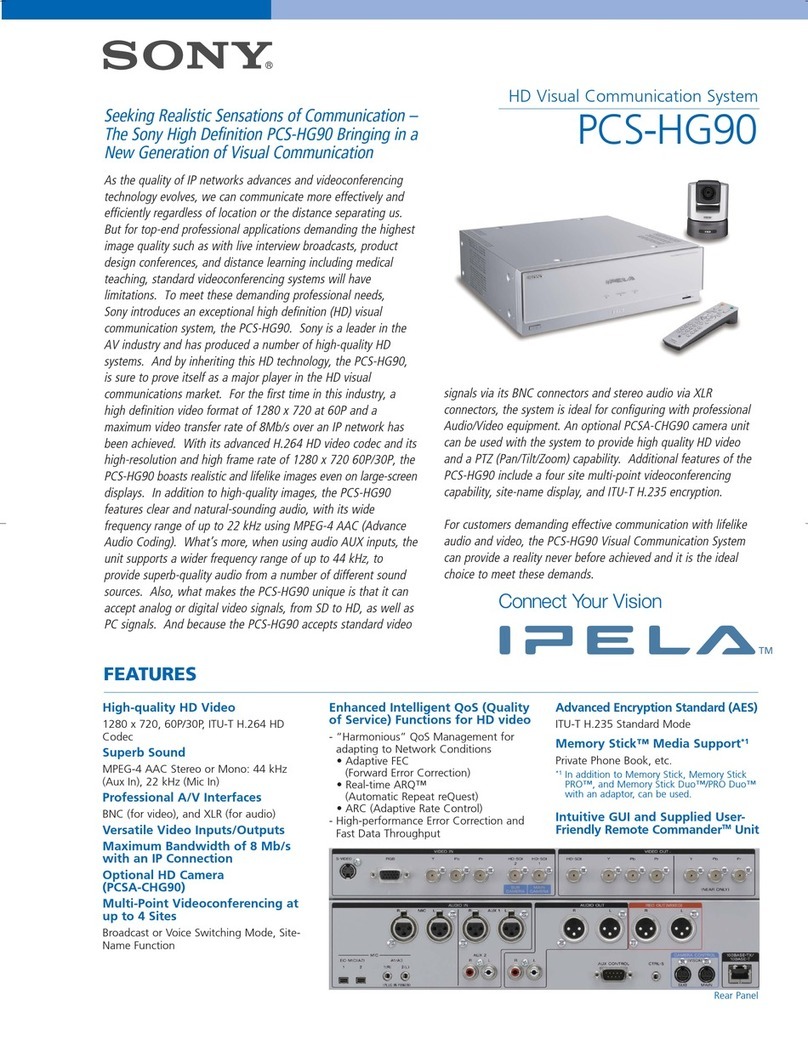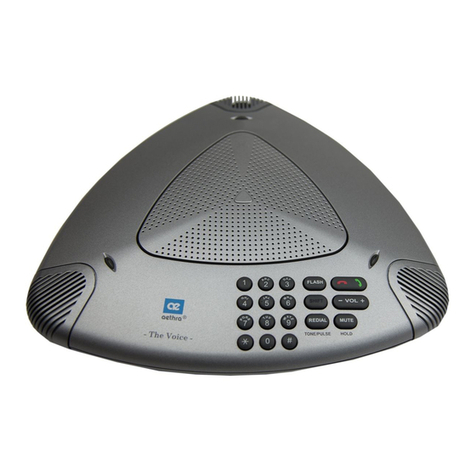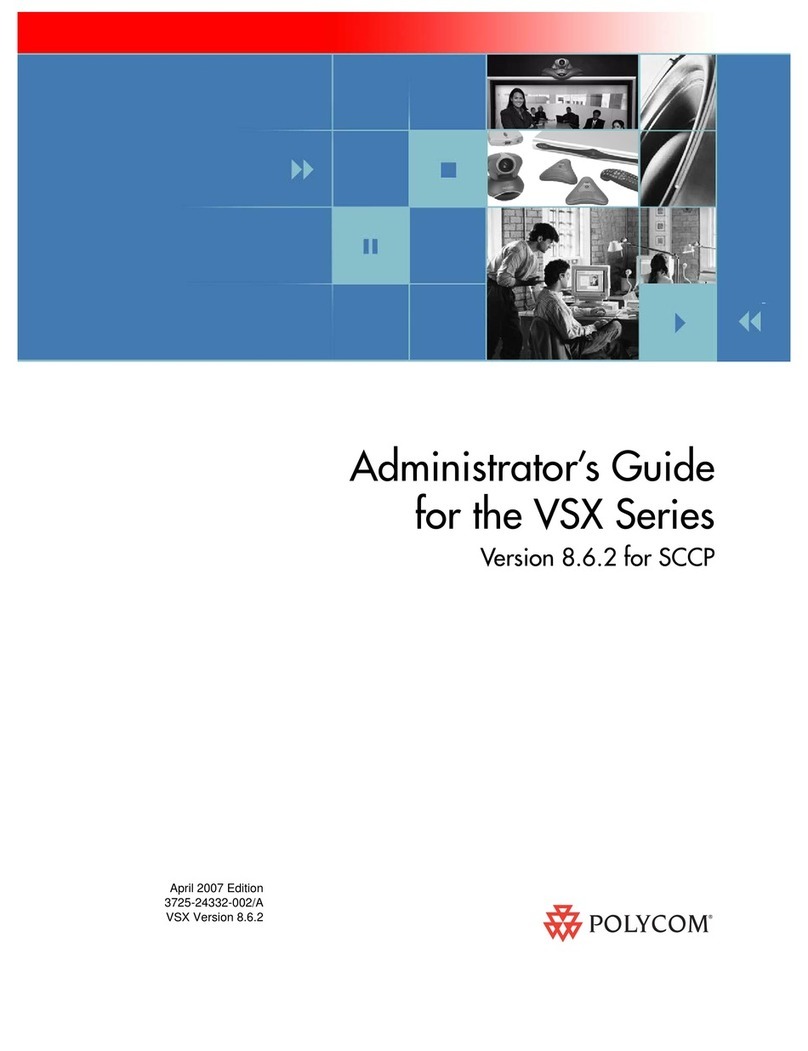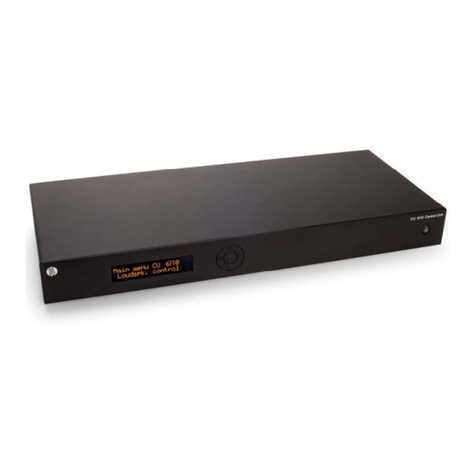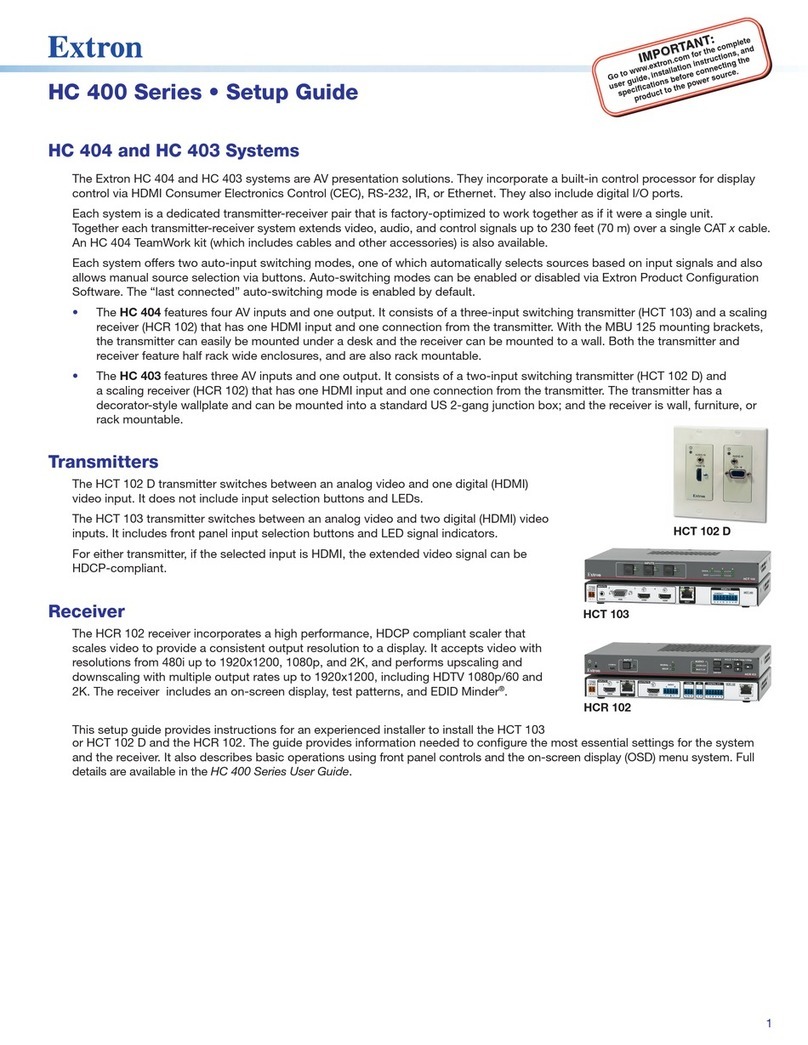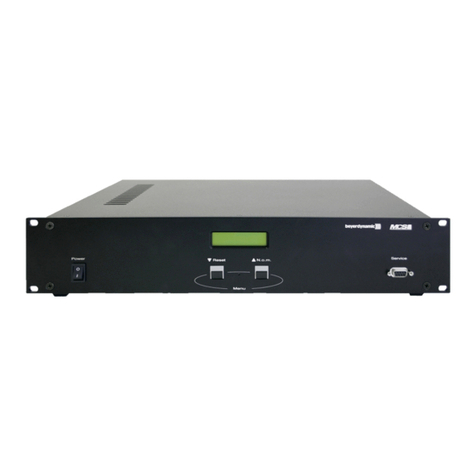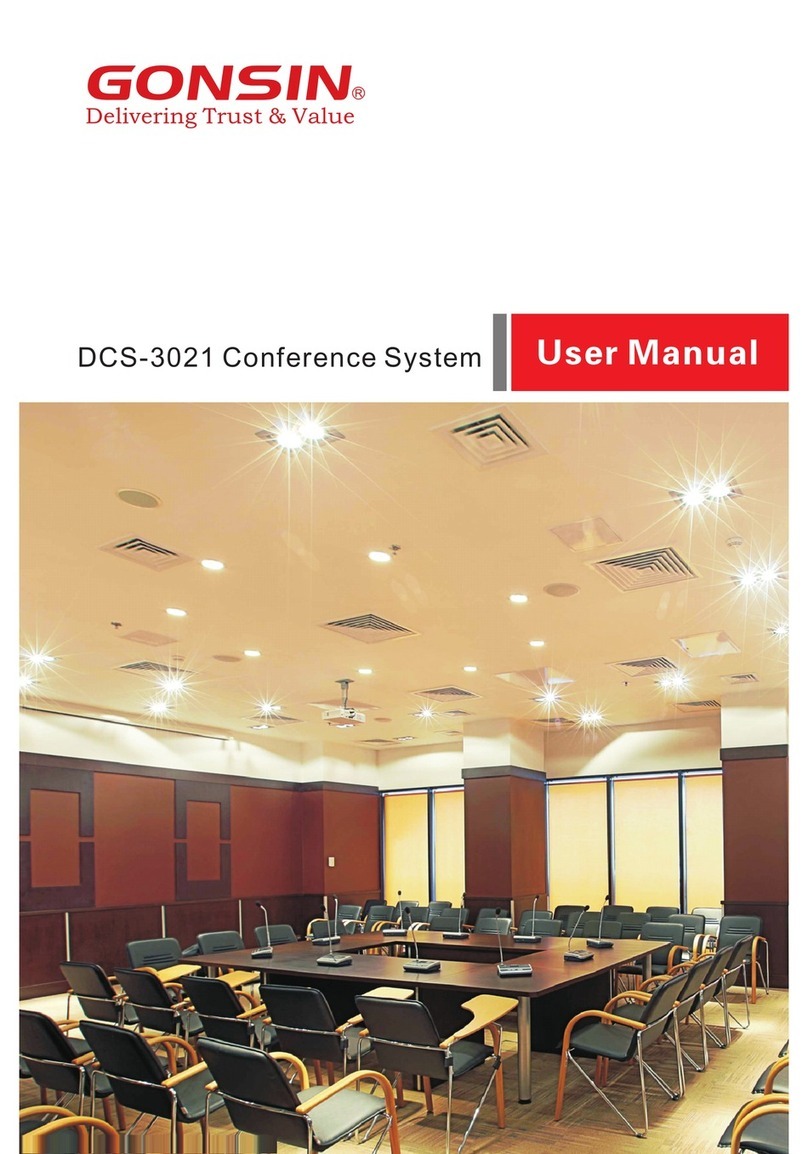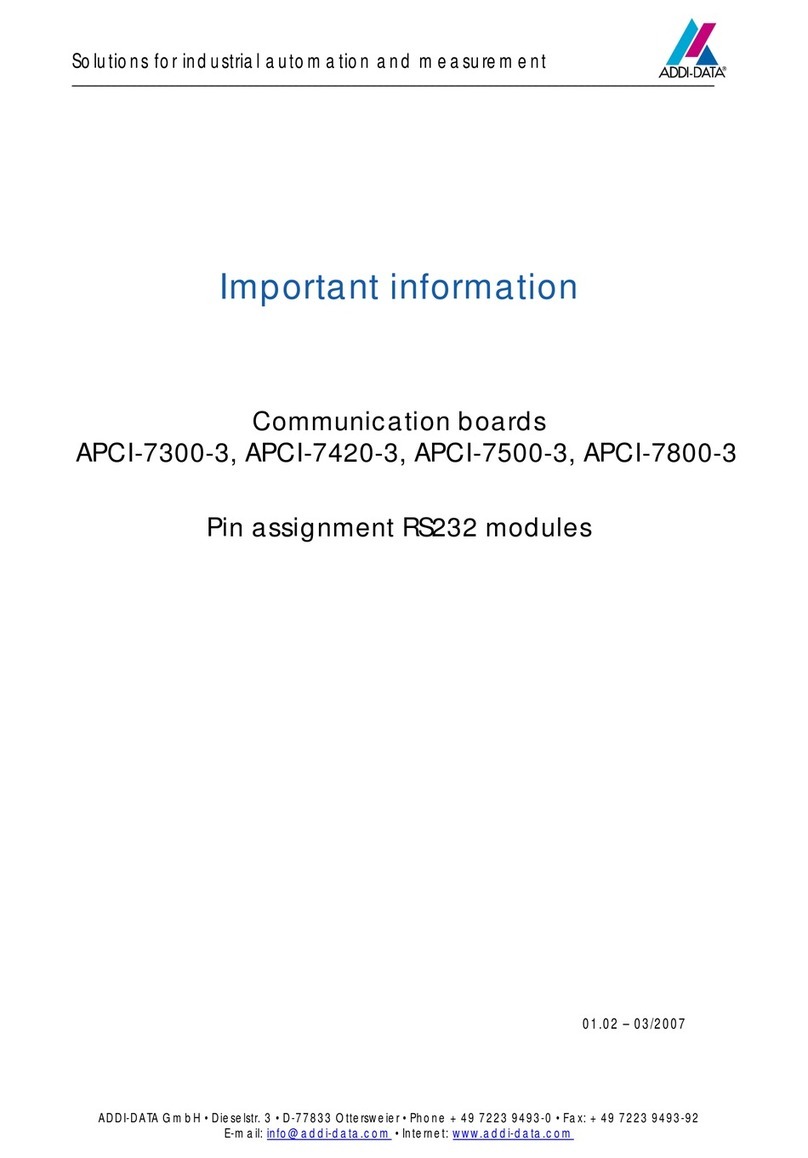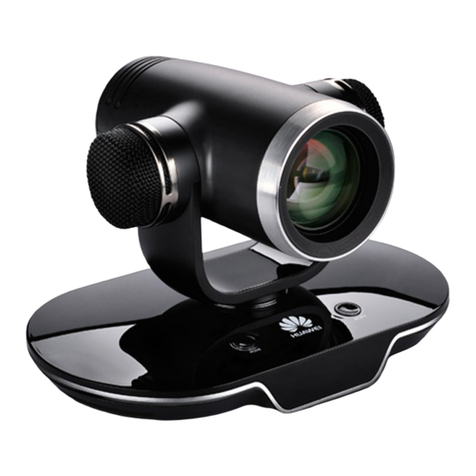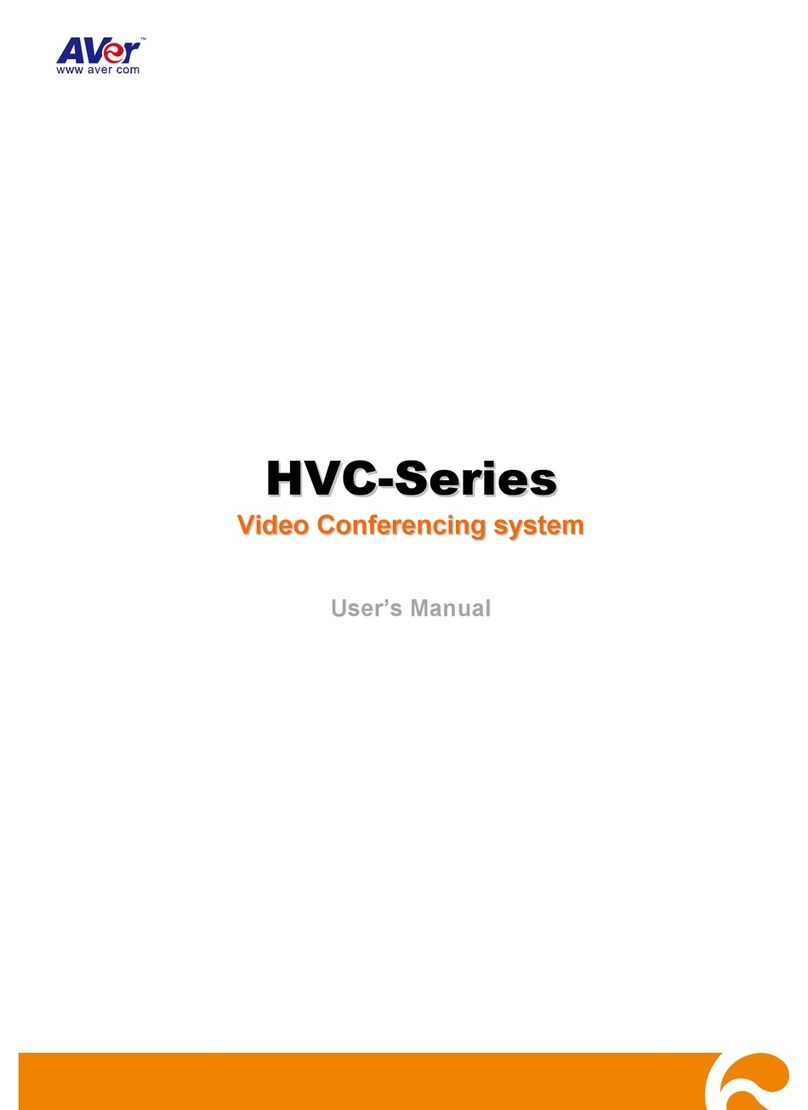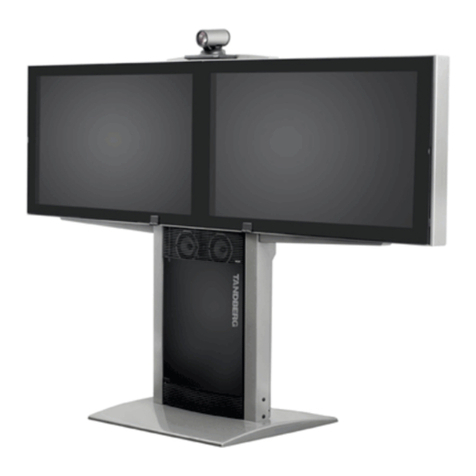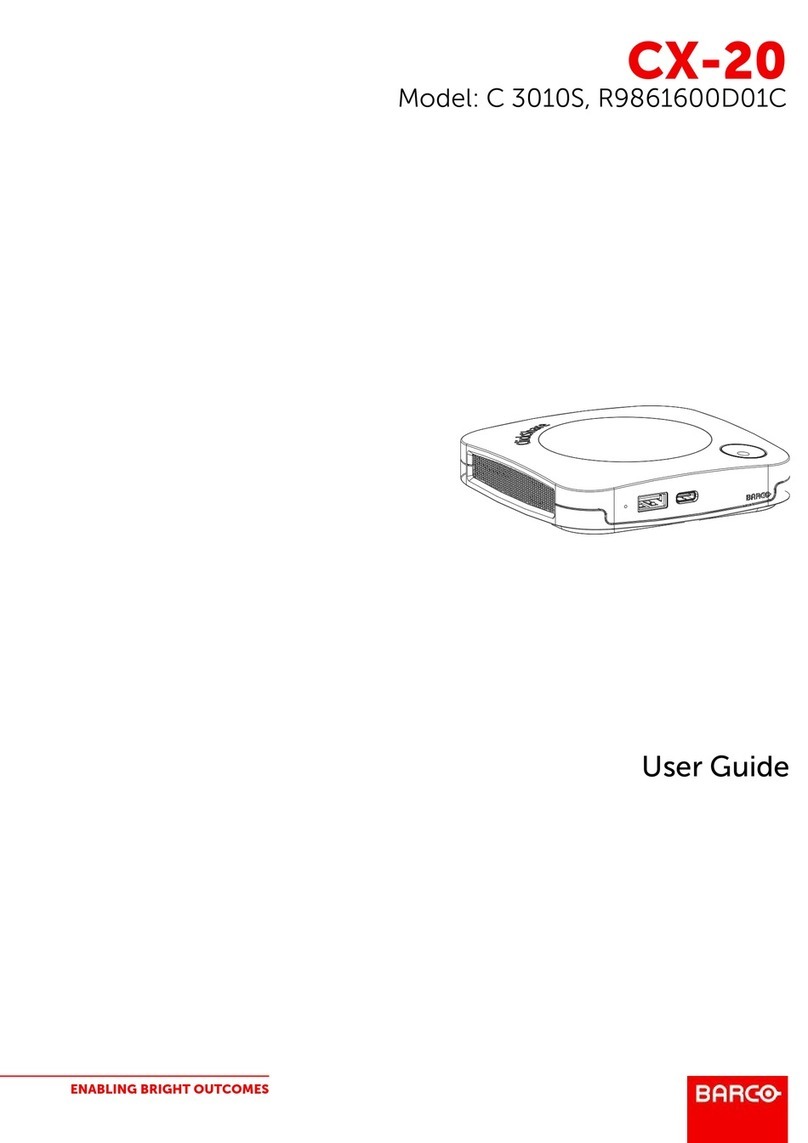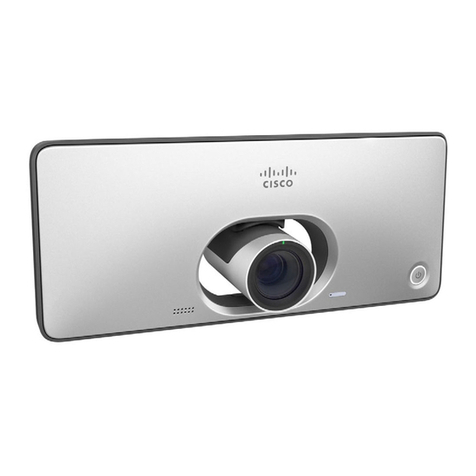GeoDesy FSO GigaPico Next AutoFocus User manual

GeoDesy Kft. Telefon: 06-1-481-2050
Fax.: 06-1-481-2049
http://www.geodesy-fso.com
1
GigaPico Next
AutoFocus
Users’ Manual 1.1

GeoDesy Kft. Telefon: 06-1-481-2050
Fax.: 06-1-481-2049
http://www.geodesy-fso.com
2
Table of contents
1Introduction...................................................................................................................... 4
1.1 What is FSO?........................................................................................................... 4
1.2 Why is it important?............................................................................................... 4
1.3 Optical Free-space Transmission .......................................................................... 6
1.4 Typical applications................................................................................................ 7
2Interfaces for the Giga Next AF Series........................................................................... 8
2.1 1000Mbps TP interface........................................................................................... 8
2.2 1000 Mbps FO interface......................................................................................... 8
3Sites of installation........................................................................................................... 9
3.1 Key factors of operation......................................................................................... 9
3.2 Preferred installation sites ..................................................................................... 9
3.3 Distance measurement.......................................................................................... 11
3.4 Direct sunshine...................................................................................................... 11
4Eye safety........................................................................................................................ 12
5The mounting bracket.................................................................................................... 13
5.1 Mounting brackets for the X Series .................................................................... 13
6System installation......................................................................................................... 15
6.1 On the table test .................................................................................................... 15
6.1.1 Alignment of the PX0500E1000TP................................................................... 16
6.1.2 How to use the alignment base ........................................................................... 16
6.1.3 Fine tuning.......................................................................................................... 17
6.2 Meanings of the LCD............................................................................................ 17
6.3 AF adjusment method .......................................................................................... 18
6.4 Connecting to your Network................................................................................ 20
6.4.1 PoE 802.3 af connection.................................................................................... 20
6.4.2 System layout...................................................................................................... 20
6.4.3 System layout with GEO20 ................................................................................ 21
7Management................................................................................................................... 22
7.1 Features.................................................................................................................. 22
Login Screen and password........................................................................................ 22
Head information screen............................................................................................. 22
Status info screen........................................................................................................ 23
Device setup................................................................................................................ 24
Network Setup ............................................................................................................ 25
SNMP Setup ............................................................................................................. 27

GeoDesy Kft. Telefon: 06-1-481-2050
Fax.: 06-1-481-2049
http://www.geodesy-fso.com
3
Security...................................................................................................................... 28
Auto-focus setup (AF) ................................................................................................ 28
Mandatory Management Activation ........................................................................... 30
Firmware update ......................................................................................................... 31
7.2 Network Interface software update..................................................................... 33
7.2.1 Update cabel........................................................................................................ 35

GeoDesy Kft. Telefon: 06-1-481-2050
Fax.: 06-1-481-2049
http://www.geodesy-fso.com
4
1 Introduction
1.1 What is FSO?
FSO is free space optics provides point-point broadband communications using
Laser Light as the transmission medium.
FSO is a state of art data communication method which is based on a very old
communication solution. Ancient Chinese developed a protection system against the
Mongol tribes, building watchtowers within the line of site to other towers. And as
soon as the towers saw some hostile sign on the horizon they use they shield to
reflect the sun to the remote towers. In this way the area could be prepared against
the attack in a very short period of time.
In the ancient times for this communication use the mirror
as a transmitter and the sunlight was the light source, and
the receiver was the remote guard’s eye. This basic
signalling method was developed later into up
communication device which used „line coding”. This
allowed the guards to tell the number of enemy, or the
direction they are coming from.
Current FSO systems use a laser-diode as a light source,
and a receptor diode (photo diode) to receive the signals
coming from the laser diode from the transmitter side. But
the basic elements are still the same: line of site between
the communication nodes, and individual line coding. It is all about performance.
GeoDesy FSO offers FSO systems with the highest power budget available on
the market.
1.2 Why is it important?
Because of in the ancient Chinese times, the rain, the fog, or even the cloudy
weather, could impact the operation of the whole system.
In the FSO units, comprising light source and receiver the cloud problem was
solved, but development conditions still can impair
performance. To go throw the rain, the fog, or snow you
need more and more power to be seen from the remote
side. Achievable power levels are limited by a number of
factors including eye safety.
In this way there is no other choice to see more than
„training the eye”. Making the receiver more and more

GeoDesy Kft. Telefon: 06-1-481-2050
Fax.: 06-1-481-2049
http://www.geodesy-fso.com
5
sensitive to sense delight emitted from the remote side. GeoDesy FSO offers high
transmit power and also very hard receiver sensitivity. These two factors combined
to provide one of the best performing FSO systems on the market today.
To meet the demands for every higher bandwidth, GeoDesy FSO (Europe) Limited
continues to invest heavily in research and development with the newest product line
which offers Gigabit speeds being launched.
This manual describes the GeoDesy FSO Next series of free space laser
transmission system.
The GeoDesy FSO Next product range offers cost effective reliable free space
laser transmission for two Mbps up to 1000 Mbps data to the air, where a clean line
of site is available. It delivers the most effective point-to-point connection between
computer networks or telephone exchanges.
No need for installing cables, no rental costs, no licensing requirements.
Ideal for urban areas or city centres, where the use of these lines are expensive.
Suitable for factories or industrial environments where high noise level can interfere
with the transmitted data. The best choice to make a connection across rivers and
other natural or artificial obstacles, where cable is not available.
The transmission technique used in the GeoDesy FSO devices provides
transparent and wire-speed data transfer with virtually zero latency. Because they
use infrared light as the transmission medium, GeoDesy FSO system do not
require frequency licenses and the transmission is not effected by electro-magnetic
or radio-frequency interference. Basically the GeoDesy FSO link can be
considered as a virtual fibre in the air, which ends in real fibre optic cable at both
ends.
Our product is built using high quality components for operation in even the most
adverse conditions.
Metal housing gives robust, waterproof environment for the electronics.
The shield protects the device from direct sunlight and provides extra air isolation.
The GeoDesy FSO Xsystems comprise two laser-heads
one at each end. The interface connections are housed in the outdoor unit together
with the PSU of the system.
Best practises were employed in cost engineering throughout the development of
GeoDesy FSO.

GeoDesy Kft. Telefon: 06-1-481-2050
Fax.: 06-1-481-2049
http://www.geodesy-fso.com
6
1.3 Optical Free-space Transmission
The principle used in free space laser transmission is very similar to the one is used
for fibre optic transmission. The difference is while fibre optic devices use electronics
and optics optimized for transmission to the air. Also one can observe to the
similarity in the transmission properties. No galvanic contact, no ground-loops, no
need for surge protection, noise immunity, long distances, high bandwidth.
What makes it unique –and difficult to design –is that it does not require any
transmission medium like fibre or copper, but it has to cope with the dynamically
changing parameters. For instance while the attenuation of an optical fibre is
constant, the attenuation of the atmosphere between the laser units can change
dramatically (depending on the weather conditions).
The laser-heads are usually placed on top of building, where the clean line of site is
guaranteed and the beam cannot be interrupted.
In the head the incoming signal is amplified, encoded, and then drives the laser-
diode. The transmitter optics assures the proper beam shape and controls the beam
divergence. The receive optics perceives and directs the transmitter signal to the
photo diode. The diode converts it back into electrical, than it is decoded, amplified
and converted.
There are several things that can influence the quality of transmission. We can
classify those factors into three main groups.
System conditions - transmitting power, transmitter’s wavelength, beam divergence,
receiver optics diameter, receiver sensitivity, parameters of optical system and
casing. These parameters determine the system’s characteristic at a certain
distance and are controlled by system design and factory set up.
Weather conditions - molecular absorption, particle scattering and turbulence. These
elements have great effect on the operational conditions of the system. We do not
have very much influence on them; proper product selection can eliminate the
undesirable effects.
Environmental conditions - building movements, direct sunlight, refractive surfaces.
These are also key factors related to the installation sites and can be controlled by
appropriate site survey and system installation

GeoDesy Kft. Telefon: 06-1-481-2050
Fax.: 06-1-481-2049
http://www.geodesy-fso.com
7
1.4 Typical applications
Most typically the GeoDesy FSO Next product are is used to interconnect LAN-
s. The system is protocol transparent, thus other applications also can be taken into
consideration. Appropriate interface converters are needed and system bandwidth
must be matched for that.
Here we collected some circumstances, where the deployment of the GeoDesy
FSO is the most adequate as a cost effective solution.
Those are:
Areas with natural or artificial obstacles
Where cable is actually not an alternative, like
across rivers or railways or in rugged terrain.
Urban
areas
Where only leased lines are available with
limited speed, and high rental cost. With
GeoDesy FSO links you can establish on line
LAN-to-LAN connections.
Industrial areas
Where you have noisy environment with high EMI
or RFI. Factory buildings, airport objects can be
connected through laser link.
ISP connections
Where high
bandwidth is required. ISP’s can offer high-speed links
to their customers or trunks can be established
between ISP’s instead of expensive leased lines.
Corporate
LAN
ISP

GeoDesy Kft. Telefon: 06-1-481-2050
Fax.: 06-1-481-2049
http://www.geodesy-fso.com
8
2 Interfaces for the Giga Next AF Series
2.1 1000Mbps TP interface
The GeoDesy FSO Giga Next AF series products are designed to provide
easy-to-use and cost-effective solution for interconnecting Local Area Networks. By
utilizing standard Category 5e cable and using standard IEEE802.3af interface the
deployment of the system is easier than ever before. The transparent and wire
speed data transfer together with virtually zero latency assures the easy integration
of the system in all environments.
The Giga Next AF systems should be considered as repeaters in the network. So
the installation distance between the head and the network device is 100m. The
distance on a back to back site is maximum 5 meters, between the heads without
signal regeneration.
The Giga Next AF systems connecting to the network with two RJ 45 cable which
provides the power required for operation and the data. The system requires IEEE
802.3af Power over Ethernet switch or power injector. The power consumption suits
to the standards described in the standard. Also provides fast and easy connection
for the management system for more details please see the chapters below. The
system is certified Class 1M product, this way 100% eye safe.
2.2 1000 Mbps FO interface
The GeoDesy FSO Giga Next MF system is ready to be upgraded with a Single
or Multi mode SC fiber interface with SX or LX option.
The power is provided via the same cable as in the case of the TP interface
systems.

GeoDesy Kft. Telefon: 06-1-481-2050
Fax.: 06-1-481-2049
http://www.geodesy-fso.com
9
3 Sites of installation
3.1 Key factors of operation
There are four key issues that the site survey has to shed light on. Proper system
operation cannot be guaranteed without satisfying all of the four requirements.
Clear line of sight - The entire optical path between the two ends must be free
of any obstacles. It not only means that one has to see the other side, but other
possible sources of disturbance should also be taken into consideration. For
example there might be turbulence above the roofs and other constructions, and this
can cause fraction or scattering of the beam or snow accumulation on roofs too
close to the beam can influence or even interrupt communication.
Solid mount surface - is the key for long-term operation. Since the diameter of
the beam is limited, it is extremely important to mount the unit on a stable structure
with the possible smallest movement. This way the receiver of the remote unit
cannot get out of the beam due to the movement of the opposite head.
East-West orientation - although the receiver optics are equipped with optical
filters to protect the receiver diode from the effect of undesired light sources, direct
sunshine can cause saturation of the diode. This prevents the system from working
properly for several minutes a day at certain times of the year. In most cases this
effect can be avoided by careful selection of the mounting spot.
In order to comply with the requirements of the successful installation - including the
discussed four key factors and other criteria - the following matters should be taken
into consideration.
3.2 Preferred installation sites
All buildings and constructions have a certain movement of their own. It’s
determined by the structure and material of the building. Metal structures can shift or
twist due to temperature changes. Wooden construction can expand or shrink with
any changes in humidity. Give preference to concrete or brick buildings. On the
other hand high structures like towers, skyscrapers or poles are always subject to
movement. Mount the support frame to walls of the building or near corners, as they
are the most stable spots. Use appropriate consoles for wall mounting. If a stand is
used on the top of
building, secure it directly to the ceiling or to the concrete cornice wherever is
possible. Do not fix stands to insulating materials as they can slowly sink under the
weight of the unit and with temperature changes. Big chimneys and smokestacks
may look stable, but as their inner temperature varies they can also move. Vibration
caused by heavy traffic, trains and elevators etc. may slowly move the system out of

GeoDesy Kft. Telefon: 06-1-481-2050
Fax.: 06-1-481-2049
http://www.geodesy-fso.com
10
its specified direction. Another important consideration is to provide enough space
for alignment and to have the potential for future maintenance. Consider that the
support frame is usually heavy, so the selected spot should be easily accessible.
Preferred installation
sites
Pay attention to
Avoid (*)
Concrete wall
Behind window
Soft materials
Brick wall
Old constructs
Chimneys
Microwave towers
Wooden constructs
Metal masts or Frames
Hidden heat isolations,
like Styrofoam
(*)
In cases where installations are listed under “AVOID” cannot be avoided than special mounting
accessories to be designed and special installations must be used.
It is not only the building that has to be solid, but the support structure too. Antenna
poles and security camera holders are not suitable for the GeoDesy FSO units.

GeoDesy Kft. Telefon: 06-1-481-2050
Fax.: 06-1-481-2049
http://www.geodesy-fso.com
11
3.3 Distance measurement
Because the units were designed, and calibrated for certain distance operations the
higher distance will decrease the availability. GeoDesy FSO pre-calibrates and pre-
tests every unit shipped to the customer. To ensure that the unit you are about to
buy fits to the needs, the first step
is to measure the distance. The
best way to measure it is by GPS
(Global Positioning
System), these units
are accurate enough to
determine the distance
between two points.
For more details please
refer to the GPS
manufacturer
handbook. Also there are several
other ways to measure the
distance. If you know the exact
address you can use mapping software like MapPoint or Auto route.
3.4 Direct sunshine
To prevent the sun shining directly
into the receiver optics, first one
has to determine the orientation of
the link. Try to avoid East-West
orientation wherever it is possible.
Examine both sides of the link at
sunset and sunrise and find a
position where the sun cannot get
behind any of the heads. Be aware
that the path of the sun is changing
throughout the year.

GeoDesy Kft. Telefon: 06-1-481-2050
Fax.: 06-1-481-2049
http://www.geodesy-fso.com
12
Type : LB P0500E1000TP
S/N : LBH-«s/n»
Input Power : -48VDC IEEE 802.3af compilant
Laser : 1M
Wavelength : 785nm
Manufactured by: GeoDesy FSO 1162 Budapest,
Kondorfa u. 6-8, HUNGARY, Tel.:+36-1-453-7440 Fax.:+36-1-240-3570
www.GeoDesy FSO.com
4 Eye safety
There are no two installation spots of the same kind, the buildings or structures, the
available space and the accessibility of the place will be different in each case.
Nevertheless, as a general rule it is very important to select the installation site so
that nobody can look directly into the transmitter. For this reason place the head
either so high (on the side wall of the building) or so close to the edge of the building
(on a parapet on the rooftop) that no person can approach it accidentally and can
get into the beam path. Set up barriers if necessary and put warning signs at
prominent places.
The laser heads are provided with all labels and hazard warnings required by the
laser standard. There are warning labels on both the left and right side of the
protective cover next to the optical window and there is a warning and an informative
label on the rear side of the laser head.
INVISIBLE LASER RADIATION
DO NOT VIEW DIRECTLY WITH
OPTICAL INSTRUMENTS
CLASS 1M LASER PRODUCT

GeoDesy Kft. Telefon: 06-1-481-2050
Fax.: 06-1-481-2049
http://www.geodesy-fso.com
13
5 The mounting bracket
In the following chapter you will find detailed description of the bracket fastenings.
5.1 Mounting brackets for the X Series
GeoDesy FSO provides the mounting bracket and all the necessary components
for Xseries units. A simple fixing technique of this bracket can be seen on the
following figure, required tools are as follows:
- drilling machine
- 10 mm wrench
Bracket sizes:
Length: 463mm
Leg Width: 263mm
Head Width: 130mm
Drill size: 10mm wall drilling
Installation steps:
Place the bracket on the wall
Mark the wall with a permanent marker
Use your 10mm wall drill to drill all of the holes into the wall
Clean the holes
Place the wall-plugs into the holes (please note that some times you need to
use hammer to put the wall-plugs into the hole, if you have to please be
careful not to break the wall-plug)
Place the bracket to the wall an line it up to the holes
Put the screws into the wall-plug through the hole on the leg of the bracket
(please see the figure above)
Tighten up the screws

GeoDesy Kft. Telefon: 06-1-481-2050
Fax.: 06-1-481-2049
http://www.geodesy-fso.com
14
Packet list for the bracket:
3pcs 8x110 screw for bracket fixing
3pcs 8x100 plastic wall-plug for bracket fixing
2pcs M6x90 bolt Head fixing
3pcs M6x25 screw Head fixing
3pcs M6 bolt head fixing
6pcs 6mm spacer bracket and head fixing
6pcs 6mm spring spacer bracket and head fixing
Mounting Hole Patterns

GeoDesy Kft. Telefon: 06-1-481-2050
Fax.: 06-1-481-2049
http://www.geodesy-fso.com
15
6 System installation
6.1 On the table test
Warning! Do not look either into the transmitter or the receiver optics because at
this distance even the reflected laser beam can be dangerous to your eyes.
Operating the system on much shorter distance than presumed originally can cause
saturation or even permanent damage to the receiver. Always use optical
attenuators for this kind of test.
The on-the-table test needs careful planning and careful use during the test period.
The units should be placed at about 2 m distance from each other with optical
windows facing one another. Put an appropriate optical attenuator (Attenuating foil
or cardboard with several small holes) between the heads. Make all the necessary
connection as described below to connect your network equipment (computer or
protocol analyzer) to the heads and power up the units. Turn ON the PoE injector
and check if the power LED is ON on the head.
You should be able to align the units without any tool and get full received level on
the signal strength LED’s. Make sure that the “Saturation”(OV) indicator is OFF.
Adjust your attenuators if necessary to avoid saturation of the receivers.
Please note that at this short distance, specially the longer distance links can reflect
to the remote site or even to the same head. If you experience full receiving level,
with no traffic throughput, in that case try to move the heads slightly units out of the
reflection zone.
Please also take in consideration that the laser beam is concentrated and in such a
short distance can harm your eyes, every time you test the units on short distance,
do it with extra care. Never look into the sighting device if the remote laser is turned
on. We strongly suggest to double check the power connection before you turn on
the device. Handle the power connection with extra care. Safety first.
After obtaining the desired received level, check the data connection between
devices. Using computers or appropriate testing devices.
On the table tests are perfect for troubleshooting (If there is a transmission problem,
check the status of the connecting devices (e.g. Link signal or cable polarity) and
cables.) in a controlled area. If you experience some problems during the test,
please try to test the connected equipments with a direct connection.

GeoDesy Kft. Telefon: 06-1-481-2050
Fax.: 06-1-481-2049
http://www.geodesy-fso.com
16
6.1.1 Alignment of the PX0500E1000TP
The first step after the unit was placed to
the bracket, and the units facing each other.
On the back of the receiver you can find the
LEDs and LCD screen for the local received
level and the remote received level.
This help will be very useful because as soon as you have received –which is very
easy to achieve –you can see the effect of your local sides movement to the other
side. For further information please check the Meanings of the LCDs chapter.
6.1.2 How to use the alignment
base
1. Loose the Coarse locker on the
horizontal as well as on the
vertical side with a 10mm
spanner
2. Move the head left - right up
down you should use the built in
telescope to lit up a few LEDs on
the remote end.
3. When you have lined the unit up
to a rough position lock the
coarse locker with a 10mm
spanner.
4. Repeat step 1-4 on the remote
end.
5. On the bottom of the unit you can find fine tuning screws one for horizontal
and one for vertical.
6. No tightening is needed on any other screw than the coarse locker.

GeoDesy Kft. Telefon: 06-1-481-2050
Fax.: 06-1-481-2049
http://www.geodesy-fso.com
17
6.1.3 Fine tuning
1. Site A start moving the
laserhead with the horizontal
fine adjustment screw by
looking at the Remote end
received level
2. Using the fine adjustment
screws, lighten as many LEDs
as possible
3. Repeat step 1-2 on Site B.
4. If necessary try step 1-2 on
both sites again.
6.2 Meanings of the LCD
Power: The head is powered up.
RX-OK: Received beam is good for communication.
TP Lk: Copper link between the head and the
Network equipment.
R-LS: The recived signal form the remote end is
modulated and .
RV/TLs: Remote end is visible for the management system and there is TP
connected to remote end –same as TP-Lk but displays it on the remote end.
Please press the button and look at the LCD scren!
1.screen
Loc (local level): Local Received level
Rem (remote level): Remote Sites Received level
Op-optimal
Ov-overload
REM:?FSO Currently on FSO channel searching the Remote side.
REM:?Backup Currently on Backup channel searching the Remote side.
REM:?FSO or Backup Auto Software desides on what to search for.
2.screen
HeadSN: Laser head serial number.
0000001
IP address: default IP address:192.168.100.220 or 192.168.100.221
After factory reset the IP address is always: 192.168.100.221
3.screen 4.screen 5.screen
Temperature -AF mode position manual 000 tech@geodesy.hu
-AF mode auto
Here shows that the auto fucus with is enabled or disabled.

GeoDesy Kft. Telefon: 06-1-481-2050
Fax.: 06-1-481-2049
http://www.geodesy-fso.com
18
6.3 AF adjusment method
What is AF after all? AF stands for Auto Focus. Geodesy FSO Giga Next AF is
equipped with the lates innovation from Geodesy. An automatic focusing control
system. The system is capable of changing its beam divergency depending on the
changes of the environment. In the case if the weather gets bad, the system will
decrease the beam size, to concentrate the distributed beam power, to ensure more
stable operation.
IMPORTANT! Auto focus adjustment does not work if there is no remote level!
Remote connection required for the Auto focus adjustment.
The installation of the Giga Next AF is pretty much the same as the standard system
installation. To make sure that the AF system won’t kick in during the alignment,
ensure that the AF is set to disabled, which is the factory default.
The default settings of the Auto Focus (AF) laser heads is manual mode (disabled).
The factory beam divergence is set for 200m, this way the alignment of the system
will be easy on every installation distance.
Please do not change the setting of the AF laser heads to auto focus when there is
no connection between the two heads.

GeoDesy Kft. Telefon: 06-1-481-2050
Fax.: 06-1-481-2049
http://www.geodesy-fso.com
19
Alignment steps
1. using the crosshair align the units into a roughly aligned position. Please note
that the alignment scope will not be able to provide with a perfect alignment,
this will have to be done using the fine alignment screws referring to the
received level screen on the LCD panel.
2. using the fine adjustment screws on the alignment base set the units to the
highest received level possible. (for further details on how to perform the fine
adjustment refer to 6.2.2 and 6.2.3 chapters)
Default distance setting of all Giga Next AF laser heads for 200m. As you can see in
below sketch, “+25 STEP” equals ~ 2 cm larger laser beam over 100 meters.
For example, if you would like to install the laser heads over 350 meters than you
will need smaller beam size to reach bigger distance (compared to the default
200m), so click on “-100 STEP” which will make the laser beam narrower and will
be proper for 350m. While clicking on the “STEP” buttons please check the remote
received level on the laser head.
Please perform the same operation on the other side.
3. After we have got the proper level, please click on “Save position as default”
button. As you have clicked on the “Save position as default” button the laser
heads will enable the AUTO FOCUS mode (enabled). The equipment will
automatically improve the remote level to the most ideal position.
Note: Geodesy FSO shall not be responsible for any failures from improper handling
of the device. If any other screw than the coarse lockers or the fine adjustment is
moved, might decrease the stability of the installation.
Trick for the reliable alignment
Please note that the beam has a powerfull ring on the side of the head and easily can be set to this ring but this is far not as big
as the core part of the beam. So every time you have an
alignment please make sure that when you see the maximum
LED s or a relativly high received level. Keep on moving to
determine where the core part of the beam is. This can be
done easily by looking at the received level you will see that
the received level moves up then it will start move down than
up again. During this time you just had the head moving into
one direction. If you have any doubt on how to do the alignment please contact your distributor
for further help. Or contact GeoDesy FSO technical support.

GeoDesy Kft. Telefon: 06-1-481-2050
Fax.: 06-1-481-2049
http://www.geodesy-fso.com
20
1. Orange/White TX+
2. Orange TX
3. Green/White RX+
4. Blue +VIN
5. Blue/White +VIN
6. Green RX-
7. Brown/White -VIN
8. Brown -VIN
6.4 Connecting to your Network
6.4.1 PoE 802.3 af connection.
BOX1.1(FO)
6.4.2 System layout BOX1.0(FO)
This manual suits for next models
1
Table of contents
